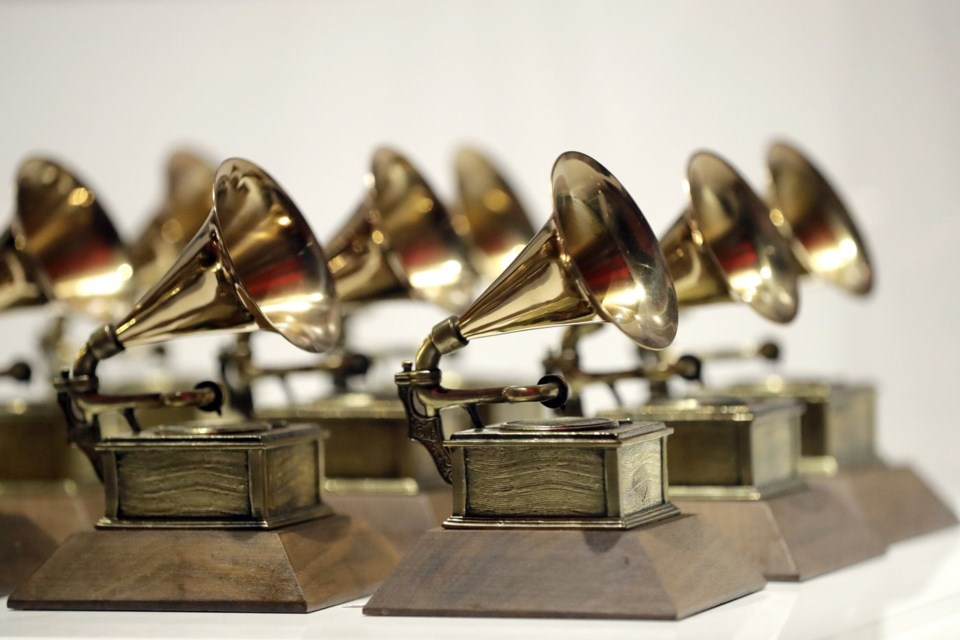NEW YORK (AP) ŌĆö For years, have been criticized over a lack of diversity ŌĆö artists of color and women left out of top prizes; rap and contemporary R&B stars ignored ŌĆö a reflection of the Recording Academy's electorate. An evolving voting body, 66% of whom have joined in the last five years, is working to remedy that.
At last year's awards, the major categories; every televised competitive Grammy went to at least one woman. It stems from a commitment the Recording Academy made five years ago: In 2019, the Academy announced it to its voting body by 2025. Under the Grammys' new membership model, the Recording Academy has surpassed that figure ahead of the deadline: More than 3,000 female voting members have been added, it announced Thursday.
ŌĆ£ItŌĆÖs definitely something that weŌĆÖre all very proud of,ŌĆØ Harvey Mason jr., academy president and CEO, told The Associated Press. ŌĆ£It tells me that we were severely underrepresented in that area.ŌĆØ
Reform at the Record Academy dates back to the creation of focused on inclusion and diversity after a previous CEO, made comments belittling women at the height of the #MeToo movement.
Since 2019, approximately 8,700 new members have been added to the voting body. In total, there are now more than 16,000 members and more than 13,000 of them are voting members, up from about 14,000 in 2023 (11,000 of which were voting members). In that time, the academy has increased its number of members who identify as people of color by 63%.
ŌĆ£It's not an all-new voting body,ŌĆØ Mason assures. ŌĆ£WeŌĆÖre very specific and intentional in who we asked to be a part of our academy by listening and learning from different genres and different groups that felt like they were being overlooked, or they werenŌĆÖt being heard.ŌĆØ
Mason says that in the last five years, the Recording Academy has ŌĆ£requalified 100% of our members, which is a huge step.ŌĆØ There are voters who have let their membership lapse ŌĆö and those who no longer qualify to be a voting member have been removed.
There have been renewal review processes in the past, but under the current model, becoming a voting member requires proof of a primary career in music, two recommendations from industry peers and 12 credits in a single creative profession, at least five of which must be from the last five years.
Comparisons might be made to which announced in 2016 that it would restrict Oscars voting privileges to active members ŌĆö ineligible parties included those who haven't worked in three decades since joining the Academy, unless they themselves are nominated ŌĆö as a response to of its lack of diversity. As a result, that the new measures unjustly scapegoated older academy members. The film academy has also adding more women and people from underrepresented racial and ethnic communities.
The Recording Academy sought to increase its voting body by reaching out to different, underrepresented communities, says Mason. ŌĆ£LetŌĆÖs take the time to understand why those people arenŌĆÖt engaging with us, figure out how we can fix that,ŌĆØ he said. ŌĆ£And once we fixed it, then letŌĆÖs invite them or ask them if they would like to be a part of our organization. So, it was a multi-step process.ŌĆØ
Since 2019, the Recording Academy has also seen growth in voters across different racial backgrounds: 100% growth in AAPI voters, 90% growth in Black voters and 43% growth in Latino voters.
Still, Mason sees room to grow. Of the current voting membership, 66% are men, 49% are white and 66% are over the age of 40.
ŌĆ£Going forward, weŌĆÖre going to continue the work. WeŌĆÖre going to continue to grow,ŌĆØ he says.
That might not look like a public commitment to a specific figure, but Mason promises ŌĆ£that our goals will be to be the most relevant, the most reflective, the most accurately representative of the music community that is humanly possible.ŌĆØ
Maria Sherman, The Associated Press


